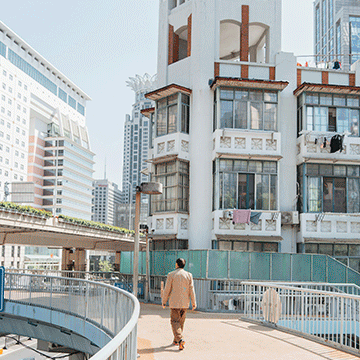Download Assets
description
On day 12 of 30 Days of Photoshop, we’ll show you how to scale, rotate, and align layers to create stunning compositions. Discover the benefits of Smart Objects for non-destructive editing, use the Polygonal Lasso tool to create a layer mask, and utilize alignment tools to perfectly position elements.
Follow along with all 30 episodes as we explore the the magic of Photoshop together!
Watch Next
JOIN 30 DAYS OF PHOTOSHOP (FOR FREE!)
Ready to jump in? Sign up and we’ll email you a printable calendar and daily class schedule so you can get started right away!
Image Source
- Kam Idris
- Matt Flores
Images sourced from Unsplash.
Share
AFTER
BEFORE
Get Your Layers In Line
Ever wondered why some designs look so polished and professional, while others feel a bit messy? It often comes down to the details. Knowing how to precisely scale, rotate, and align your layers is a fundamental skill that separates a good composition from a great one. This lesson will show you how to take complete control of your images, ensuring every element is sized, angled, and positioned exactly where it needs to be for a clean, intentional look.
Transform Layers Non-Destructively
To begin, you’ll learn how to use Smart Objects, which are key to non-destructive editing. When you place a new image, Photoshop automatically converts it into a Smart Object. This allows you to scale it down to 1% and back up to 100% without any loss of resolution.
1. To manually convert a regular layer, right-click and select “Convert to Smart Object.” Use the Free Transform tool (Keyboard Shortcut “Ctrl/Cmd+T”) to access all transformation controls.
2. Hold down Shift while dragging a corner to maintain the aspect ratio, or hold Alt or Option to scale from the center point. You can also manually input dimensions or rotation angles in the top bar.
3. Use Ctrl/Cmd+T and then click and drag one of the edges while holding Ctrl/Cmd to skew the image. Ctrl+Shift+Alt+T or Cmd+Shift+Option+T will give you perspective. Once you are done, hit Enter to apply the changes or Escape to cancel.
Use Layer Masks
Layer masks are essential for selectively hiding or revealing parts of a layer.
1. To create a layer mask from a selection, first use a selection tool like the Polygonal Lasso tool to outline the area you want to keep.
2. Then, with your layer active, click the Layer Mask icon at the bottom of the Layers panel. This hides everything outside your selection.
3. To move the image independently of its layer mask, click the chain link icon between the layer thumbnail and the mask thumbnail in the Layers panel. This is useful for repositioning the image within the masked area. To link them back, simply click the chain link icon again.
Align with Precision
The alignment tools help you perfectly position layers relative to each other or to a selection.
1. To align two or more layers, Shift-click to select them in the Layers panel.
2. With the Move tool (Keyboard Shortcut “V”) active, a set of alignment icons will appear in the top options bar. You can align them to the top, bottom, left, right, or center, both vertically and horizontally.
Alternatively, you can align a layer to a specific area by making a selection first. For example, to perfectly center a signature on a photo frame, hold Ctrl/Cmd and click on the layer mask thumbnail of the photo frame to turn it into a selection. Then, select the signature layer and use the alignment tools to center it within the active selection.
Congratulations on completing today’s lesson! You now have a solid understanding of how to transform and align layers in Photoshop for professional results. Join us tomorrow for day 13, where we’ll teach you how to crop and expand your images to create balanced and impactful compositions.












